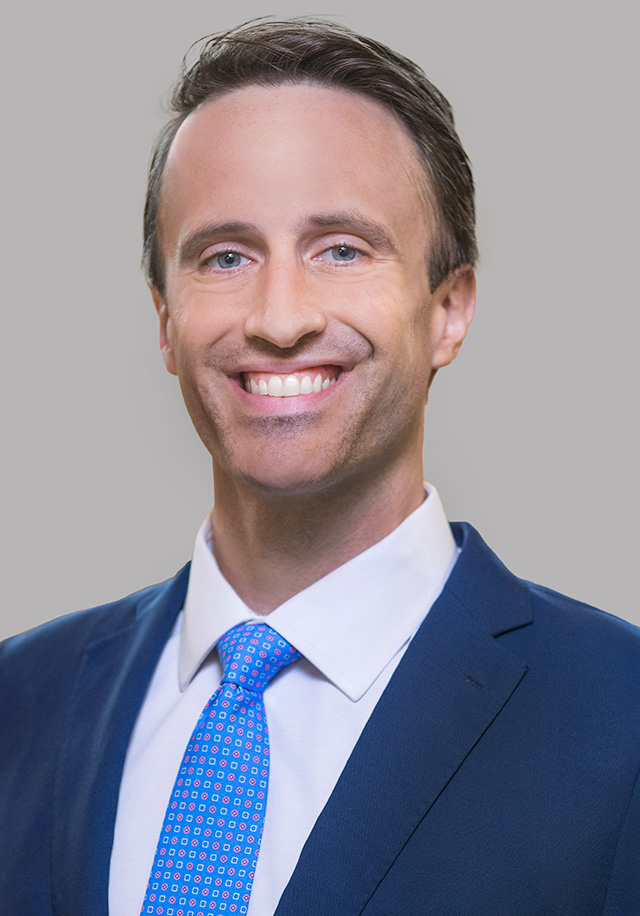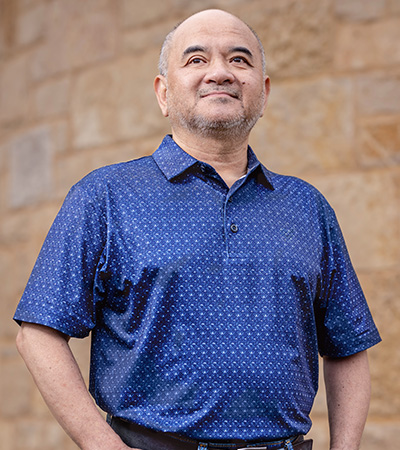Joseph De La Cruz will be the first person to admit that nurses often make the worst patients. The reason being? “Nurses can be stubborn and they don’t always follow their own advice — like getting medical help when they have a health problem,” he jokes.
For Joseph, the problem was neck pain that persisted for more than five years. It’s not that he ignored the symptoms, he just went about finding relief in his own way. He tried all kinds of different pillows to alleviate the many nights of pain. Even when he was sleep deprived, he chose not to take medications that could make him drowsy during the day.
As a neurological care registered nurse at Texas Health Presbyterian Hospital Plano, Joseph had to be alert for patients to guide them through their own neck and back health journeys. He tried a neck brace and exercises to stretch his neck, but then his arms started to go numb. At work, he couldn’t raise his arms without being in extreme pain. Pretty soon, he couldn’t even brush his teeth without dropping his toothbrush.
The 59-year-old had never had major surgery before so when talk turned to an anterior cervical discectomy and fusion (ACDF), he didn’t immediately get on board. “Being a patient is different and I wanted to be cautious,” Joseph says.

Then colleague and skilled neurosurgeon Joseph Quillin, M.D., a physician on the medical staff at Texas Health Plano and at Texas Health Neurosurgery & Spine Specialists, a Texas Health Physicians Group practice, stepped in. “He said it was time for surgery, and I couldn’t disagree,” Joseph recalls. “I talk to Dr. Quillin on a daily basis so the trust was there; I felt comfortable with the treatment option and I knew it was a mastered procedure.”
What Quillin recommended was an advanced spinal decompression procedure that involved removing multiple damaged discs in Joseph’s neck that were pushing on his spinal cord and causing him to have ongoing pain. “Joseph had degenerative disc disease from years of wear and tear on his neck and spine that would continue to give him problems without surgery,” Quillin explains.
“I used to do lots of pushups, weights, and other workouts,” Joseph adds. “Over time, I started noticing the recurring pain.”
Back to Caring, and Sharing

Joseph De La Cruz
During the hour-long procedure done through the throat area, Quillin successfully removed the compressed discs and then fused the surrounding bones together with metal screws and pins to promote stabilization and healing. It didn’t take Joseph long to notice a change for the better.
“I could feel my arms right away; I could feel the touch of my wife when I held her hand,” he says.
One of the benefits of working in the hospital’s neurological care area was the RN’s access to colleagues who could coach him through several weeks of physical therapy. His own knowledge helped him in carrying out a home-exercise routine and stabilization techniques to aid the healing process as well.
Now one year out from surgery, Joseph is thrilled to be on a much better health course. It’s a journey that he gladly shares with his patients every day. “Now I can take away some of the anxiety of the procedure for other patients.”
Take our free Back Health Assessment to find out how neck or back pain may be affecting your life. Ready to schedule an appointment? Find a back and spine specialist on the medical staff near you.

